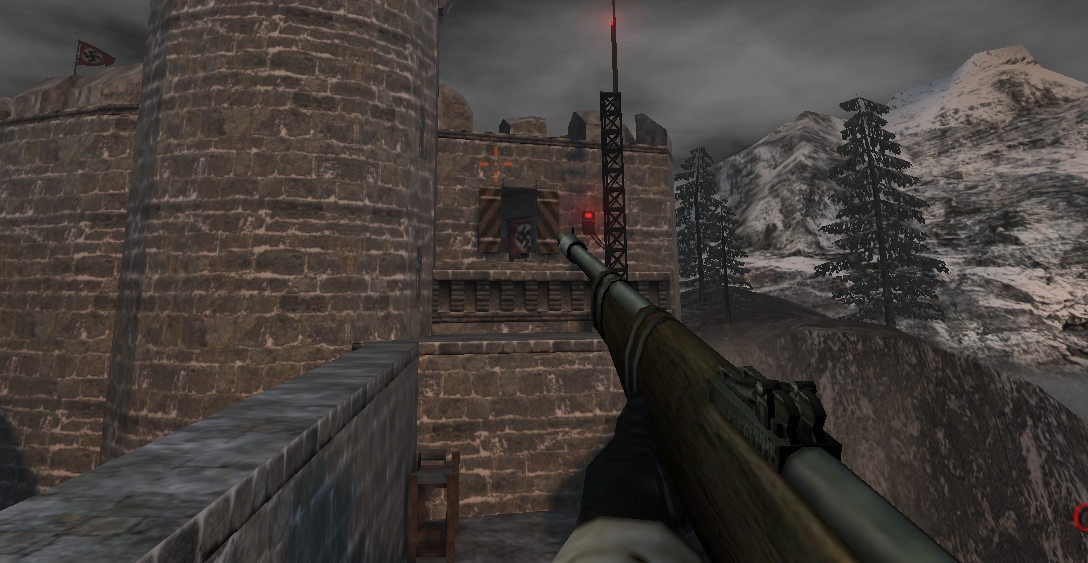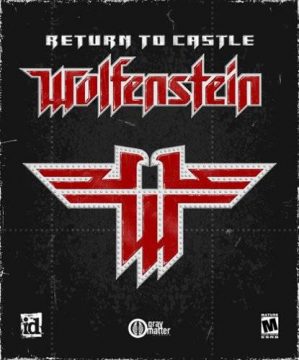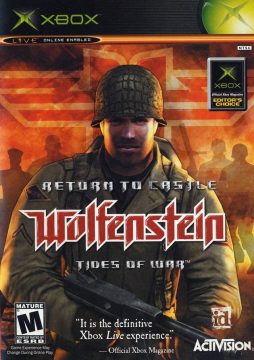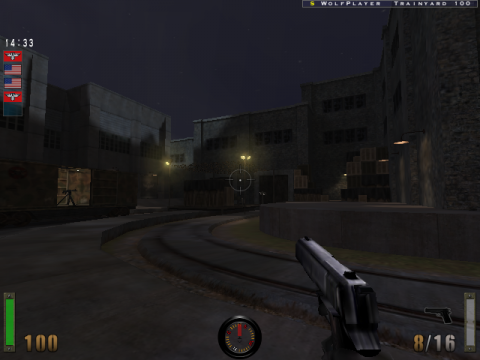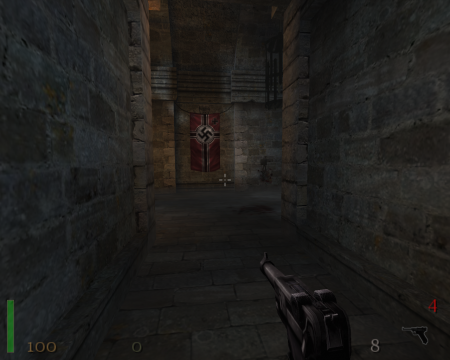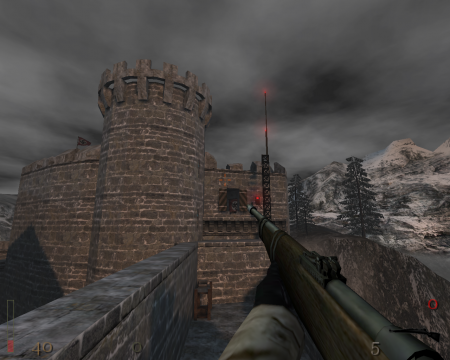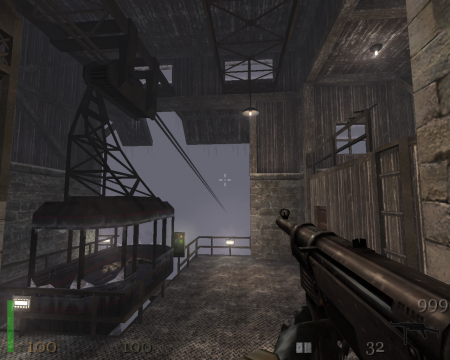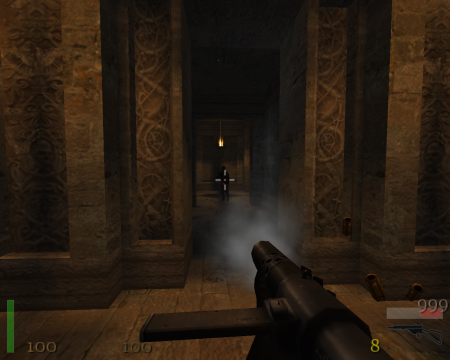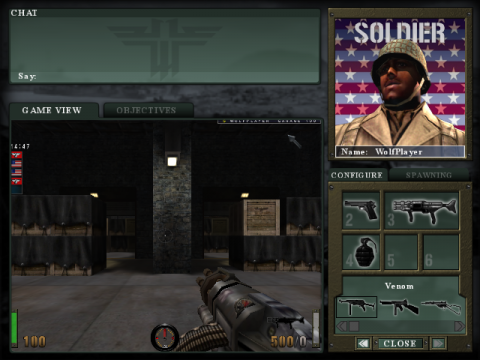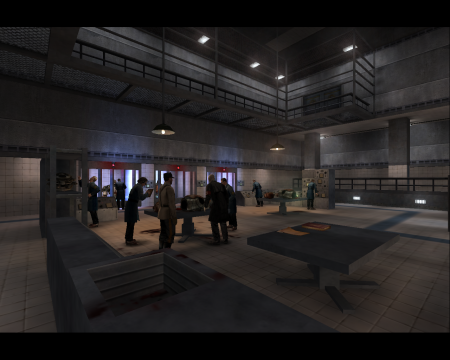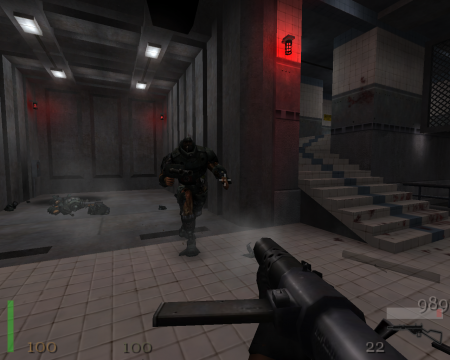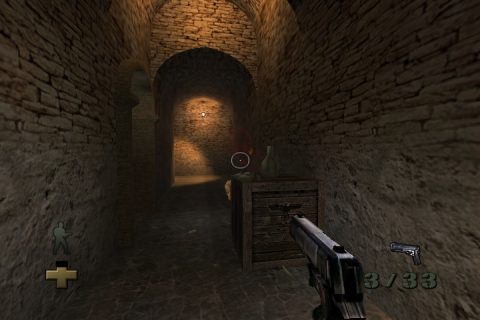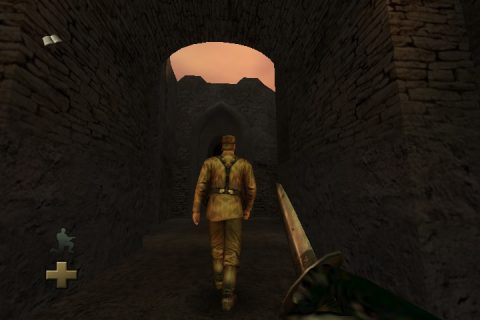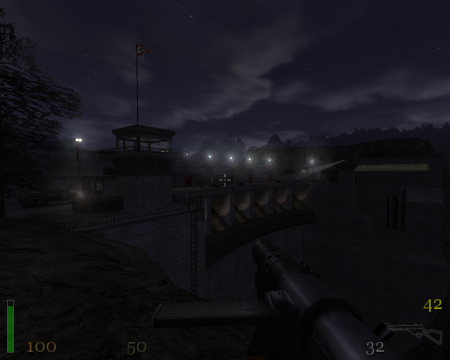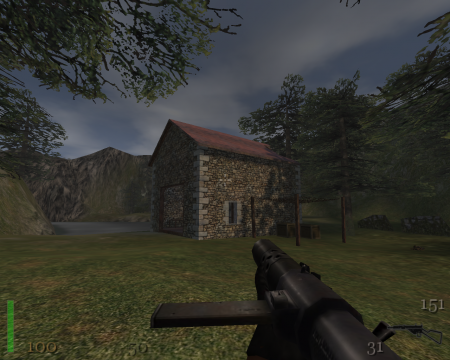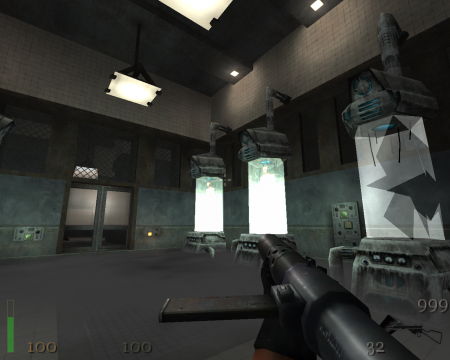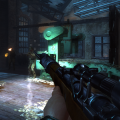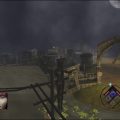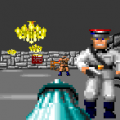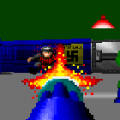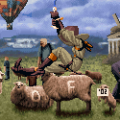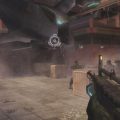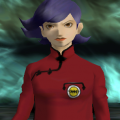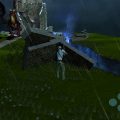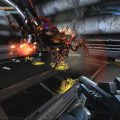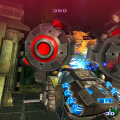The Wolfenstein series was not heard from for almost six years, until id Software announced that a brand new game would be released in 2001, powered by their state-of-the-art Quake 3 Arena game engine. Return to Castle Wolfenstein, developed by Grey Matter Software (formerly Xatrix, and best known for their previous games, Kingpin: Life of Crime and Redneck Rampage), brought heaps of World War II realism to the game, while retaining the more fantastical elements of previous Wolfenstein games.
The game is essentially a complete retelling of Wolfenstein 3D. As Agent BJ Blazkowicz, a previous mission of yours in North Africa ended in failure, resulting in the capture of you and a fellow agent. Now held in Castle Wolfenstein, your new objective is to escape and pick up where you left off, investigating rumors that Nazi Germany is attempting to gain the upper hand in the War through the SS Special Projects Division’s “Uber Soldat” project, and the SS Paranormal Division’s “Operation Resurrection.”
Game technology had progressed by leaps and bounds since the last Wolfenstein game, and RTCW doesn’t disappoint. Using a modified Quake III engine, characters have life-like animations, realistic faces, perfect recreations of actual German uniforms, and AI capable of kicking your grenades right back to you. The level designs are all designed after actual German castles, villages, and military installations from the War, with an amazing attention to detail. Chairs can be picked up and thrown, suits of armor will fall over and break if you pass too closely, and there are even small secrets that can be found by blowing up walls and finding hidden switches.
In true keeping with the Wolfenstein 3D style of including not only more “traditional” World War II stylings but also more fantastical elements, RTCW takes somewhat lengthy detours into the supernatural. The central element of the game’s story, Operation Resurrection, has the SS Paranormal Division unearthing the remains of Heinrich the First, a “dark knight” from Germany’s storied past who possessed powers that could help Germany win the war. So at certain points during the game, you will find yourself going through old tombs and churches within Germany, where you will fight zombified knights, whose shields can deflect your bullets, and other zombies who can attack you at a distance with their ghostly skull projectiles. The “zombie” sections almost feel as if they go on for a bit too long, but the level design is still just as believable and well-made as the rest of the game, and the Half-Life-inspired scripted sequences break up the monotony. By the end of these sequences, though, it’s great to back to fighting the regular Nazis again.
In another attempt to break the monotony, though, are the two stealth missions, which are levels where discovery (i.e. someone tripping the alarm, which is often tied directly to the guards’ vision) immediately ends the mission. RTCW‘s guard AI is quite good during combat scenarios, but pretty horrible in terms of stealth gameplay, so these sequences are somewhat frustrating in practice. The stealth element is present throughout the game, with some missions being decidedly easier if you can manage to sneak up on certain guards and backstab them without them pulling the alarm, but it is only in these levels where said alarm results in the equivalent of instantaneous death.
Thankfully, outside of these two utter stinkers of missions, RTCW‘s level design is excellent. Everything from Castle Wolfenstein itself, to the village of Wulfberg, to the V-Weapons Complex and the Uber-Soldat laboratories is absolutely spot-on in terms of atmosphere and texture work, and it’s not easy to get lost, even given the relative non-linearity of certain maps. The character models are excellent as well, using real faces and real German uniforms. The “photo-sourced” look has held up surprisingly well, and the Quake 3 Arena engine’s graphical muscle makes sure that everything is rendering believably as well, including what might be the best-looking flamethrower effect in the history of video gaming, that even the game’s own sequel couldn’t hope to one-up. All of this is supplemented by an excellent soundscape of ambient noise, machinery, real alarm klaxons, powerful gunfire, and orchestrated music. The music, unfortunately, isn’t very much – the longest “song” in the game is only about a minute long, and the music is often repeating infinitely, but it’s composed in such a way that it provides background audio and is never extremely loud or irritating. Also, much to the disappointment of the more hardcore Wolfenstein fans, the German soldiers now speak accented English instead of actual German – on the other hand, though, one could argue for the “translation convention” here, in that BJ probably studied the language enough to understand it.
In multiplayer, RTCW takes on a gameplay style that few other games had tried at that point. Multiplayer is solely limited to a team-versus-team mode, of Axis versus Allies, where in the majority of cases, the Allies need to bomb their way into the Axis base, then steal or destroy some vital object and make their way back out again, while the Axis team is solely tasked with defending themselves until time runs out. Teams can select from four classes. The Soldier is the most well-rounded, and can select from any of the primary weapons in the game, from SMGs like the MP-40, Thompson, and Sten, to the Mauser rifle, Panzerfaust, and the Venom minigun. Medics can revive incapacitated team-mates with their syringes, and drop medikits on the ground which can be picked up by other team members, but they can only select from the SMGs. Engineers get dynamite and pliers (the generic “engineering tool”), which are both absolutely essential to completing any of the objectives in the maps, but again, they can only pick from SMGs as their weapons. Finally, there is the Lieutenant class, of which there can only be one on a team, but Lieutenants can select any weapon, can issue orders to teammates using the quick voice chat, and call air strikes by dropping smoke grenades.
The general progression of each map runs thusly: while the Allied team gets an Engineer in position at a crucial wall and arms dynamite to destroy it, the Axis team has (roughly) 30 seconds in which to get in defensive positions for when the dynamite goes off. When the wall is breached, the Allies must fight off the defending Axis forces as they move to their objectives in order, such as destroying a radar installation, then stealing war documents, then finally escaping out the back entrance. When a player’s health reaches zero, they are incapacitated, at which point any nearby Medic can revive them within 30 seconds of them having been taken down. However, the opposing team may also finish them off by stabbing them or killing them with high explosives such as grenades or Panzerfausts, or players may skip the countdown timer altogether and go straight to the Reinforcements queue. Every 30 seconds, the Reinforcements queue respawns all dead players at the start of the map, where they may run back towards the action. Of course, it’s entirely possible that either team, with sufficient strength, can completely shut-out the other team by camping respawn points, but the scale of the game (16 players to a team for 32 players max) typically doesn’t favor such things. The multiplayer portion of RTCW was developed by industry newcomers Nerve Software, who have since helped id Software by porting Wolfenstein 3D and Doom II for Xbox Live Arcade, as well as developing the Doom 3 expansion pack, Resurrection of Evil.
When it came time to port RTCW to console systems, two separate versions were made: the Xbox version, Tides of War, and the PlayStation 2 version, Operation Resurrection. Both versions contain an entirely new prequel chapter (developed by Threewave Software, previously known for the popular Threewave CTF mod for Quake 2) set in North Africa as Agent Blazkowicz and his OSA partner, Agent One, investigate a German dig site overseen by the SS Paranormal Division. These new levels, called “Ras el-Hadid”, are not really as good as the rest of the game, with the first level serving as an elaborate tutorial. It is also the only part of the game in which BJ speaks – he becomes silent for the rest of the game. The new chapter serves as the new introduction for the game, with the PC version’s intro at Castle Wolfenstein taking place immediately after Ras el-Hadid. For reasons unknown, all of the weapon sound effects in the two console versions have been replaced with brand new ones.
The Xbox port includes full support for two-player split-screen co-op, and Xbox Live support to play in the online team modes made famous by the PC version (though these days, this mode is only playable via System Link, as Original Xbox Live has now been discontinued). The Xbox port also features split-screen cooperative play through the entire game, with player two taking on the role of BJ’s OSA partner, Agent One. In single-player mode, there are some other notable changes. The Stamina bar, which allows you to run quite a bit faster for a short period of time, is now completely absent, with the sprint feature having been removed entirely. Therefore, the pickup items tied to this feature – like the mugs of beer – are now removed.
However, Xbox players get an additional perk in the form of a shotgun that can be acquired starting from Chapter 2. The shotgun is not a bad weapon at short to medium ranges, and is generally nice to have against the regular guards, but ammo is quite difficult to come by for it (it is Nazi Germany, after all) and it doesn’t work too well against the zombies, in complete defiance of established zombie game conventions. There are also a handful of new enemies, such as undead mages who will zap you with lightning, and mutant dogs with miniguns strapped to their backs. There are some new inventory items like the Holy Cross, which can be used to make the zombie knights explode in a flash of crucifix-shaped light, and the EMP Device, which proves exceptionally useful against the irritating Lopers in Chapter 4. They only ever seem to appear once each through the entire game, often very near a part of the game in which you will need them.
The PS2 version contains a few tweaks such as a nicer-looking HUD and generally brighter level lighting (as the Xbox version was quite dark, even in broad daylight). It does not contain multiplayer in any form (not even local co-op), and does not include the unlockable Wolfenstein 3D from beating the game. The sound effects are somewhat lesser in quality, due to the PS2’s relative lack of memory. It also seems to lack the extra enemies, the shotgun, and extra items like the Holy Cross, X-Shield, and EMP Device. On the other hand, however, some missions have been greatly expanded, with a few new areas added to the levels after the Ras el-Hadid chapter, and at the end of each map you are allowed to increase your stats, RPG-style, using bonus points earned from finding secrets. You can do things like increase health, armor, and ammo capacity, or purchase portable health and armor items that can be used at any time. The major drawback with the game being on PS2, though, is that since the machine does not have a hard drive for mass storage, the game can’t actively save checkpoint saves in the middle of the level, and you will be forced to save the game manually to your memory card. Granted, the save only takes up to a maximum of 300 KB, but the nature of the PS2 memory card means that saves and loads do take quite a bit longer than the Xbox’s internal hard drive.
When Return to Castle Wolfenstein was considered for release in Germany, id Software had to make a number of cuts to make the game legal, again due to Germany’s laws that make it illegal to sell media that contains Nazi references and swastikas (except in the purposes of education). In addition to having to remove all the swastikas, Hitler portraits, and other Nazi paraphernalia, the entire enemy faction is now known as the “Cult of the Wolf,” their voiced lines are redubbed to have no emotion, all instances of the Nazi anthem “Horst Wessel Lied” were replaced with classical music such as Beethoven’s Moonlight Sonata instead, and even some of the enemy battle chatter is altered to remove profanity and any references to military rank (such as “pack leader” instead of “Oberfuhrer”)
